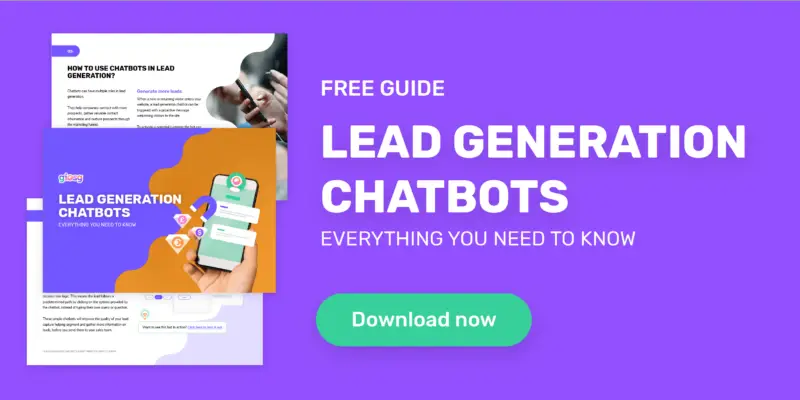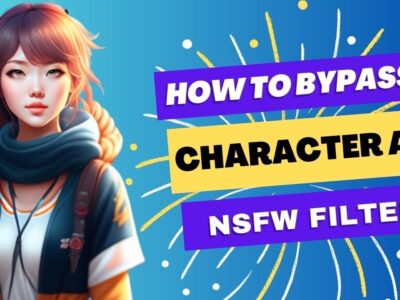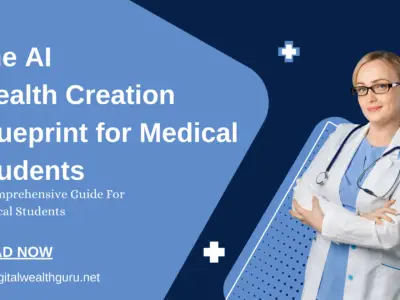Don’t break the bank on lead generation! Our curated list of the best Chatbot for Lead Generation; free and affordable chatbots reveals how you can capture more leads without sacrificing quality.
Chatbots have become indispensable tools in the modern digital landscape. They’re not just customer service representatives; they’re powerful lead generation machines, capable of capturing, nurturing, and qualifying leads around the clock.
If you’re not leveraging chatbots in your marketing strategy, you’re leaving a lot of potential revenue on the table.
What Are Chatbots?
At their core, chatbots are computer programs designed to simulate conversations with human users. They can interact through various channels, including websites, messaging apps, social media platforms, and even voice assistants like Amazon Alexa or Google Assistant.
Types of Chatbots
Let’s dive into the diverse landscape of chatbots, examining their different types based on their underlying technology and functionality:
1. Rule-Based Chatbots (Decision-Tree Bots):
- How They Work: These chatbots operate on a set of pre-defined rules and responses. They follow a decision tree structure, where the user’s input triggers specific replies.
- Strengths:
- Simple to build and implement.
- Cost-effective solution for basic interactions.
- Ideal for answering FAQs, providing basic information, or guiding users through simple processes.
- Limitations:
- Limited to pre-programmed responses.
- Cannot handle complex queries or unexpected user inputs.
- Conversations can feel robotic and scripted.
2. Keyword Recognition-Based Chatbots:
- How They Work: These chatbots identify specific keywords or phrases in user input and respond accordingly. They use pattern matching algorithms to trigger relevant responses.
- Strengths:
- Relatively easy to set up.
- Can handle a wider range of user inputs compared to rule-based chatbots.
- Useful for tasks like directing users to relevant resources or answering specific questions.
- Limitations:
- Still reliant on pre-defined keywords and responses.
- May struggle with understanding context and intent behind user input.
- Conversations can lack natural flow and feel repetitive.
3. AI-Powered Chatbots (Contextual/Conversational Bots):
- How They Work: These chatbots leverage artificial intelligence (AI) and natural language processing (NLP) to understand and interpret user input in a more human-like way. They can learn from past interactions, handle complex queries, and generate responses dynamically.
- Strengths:
- Provide more natural and engaging conversations.
- Can understand context, intent, and even sentiment behind user input.
- Offer personalized recommendations and solutions based on user data.
- Can handle complex tasks like lead qualification, troubleshooting, and customer support.
- Limitations:
- More complex to build and require ongoing training and maintenance.
- Can be costly to implement, especially for small businesses.
- May occasionally produce inaccurate or nonsensical responses if not properly trained.
4. Hybrid Chatbots:
- How They Work: These chatbots combine rule-based and AI-powered elements. They use pre-defined rules for simple tasks and AI for more complex interactions.
- Strengths:
- Offer the best of both worlds: efficiency of rule-based bots and intelligence of AI-powered bots.
- Can handle a wide range of user inputs and tasks.
- Provide a balance of structured and natural conversations.
- Limitations:
- Can be more complex to design and implement compared to single-technology chatbots.
- Require careful balancing of rule-based and AI components to ensure optimal performance.
5. Voice-Enabled Chatbots:
- How They Work: These chatbots use voice recognition and text-to-speech technologies to interact with users through voice commands.
- Strengths:
- Offer a hands-free and convenient way to interact, especially for users on the go.
- Provide a more natural and intuitive conversational experience.
- Can be integrated with smart speakers and other voice-activated devices.
- Limitations:
- Can struggle with accents, background noise, and complex commands.
- May not be suitable for all use cases, especially those requiring visual input or privacy.
How Chatbots Work

The inner workings of a chatbot involve a fascinating interplay of technology, allowing them to understand, interpret, and respond to human language in a way that simulates conversation. Let’s break down the key components and processes that make chatbots tick:
1. Input Processing:
- User Interface: The user interacts with the chatbot through a chat window on a website, messaging app, or voice assistant. They input their message by typing or speaking.
- Input Analysis: The chatbot’s natural language understanding (NLU) component analyzes the user’s input. It breaks down the message into individual words and phrases, identifies entities (names, places, dates), and tries to understand the intent behind the message.
2. Natural Language Understanding (NLU):
- Intent Recognition: The NLU engine uses algorithms and machine learning models to determine what the user wants to achieve (e.g., get information, make a purchase, resolve an issue).
- Entity Extraction: The NLU engine identifies and extracts relevant information from the user’s message, such as product names, order numbers, or dates.
- Sentiment Analysis: In some cases, the NLU engine also analyzes the emotional tone of the message (positive, negative, neutral) to better understand the user’s feelings.
3. Dialog Management:
- Context Awareness: The chatbot maintains a history of the conversation, allowing it to understand the context of the current message and provide relevant responses.
- Decision-Making: Based on the intent, entities, and context, the chatbot’s dialog management system decides on the appropriate action to take. This could involve:
- Retrieving information from a knowledge base
- Asking clarifying questions
- Triggering a specific workflow (e.g., lead qualification, order processing)
- Transferring the conversation to a human agent
4. Natural Language Generation (NLG):
- Response Generation: The NLG engine constructs a response to the user’s message. It translates the chatbot’s internal representation (e.g., data from the knowledge base, decision to ask a question) into human-readable text or speech.
- Personalization: In some cases, the NLG engine can tailor the response to the user’s preferences or past behavior, making it more relevant and engaging.
5. Output Delivery:
- Channel Integration: The chatbot delivers the response to the user through the same channel they used for input (chat window, messaging app, voice assistant).
- Feedback Loop: The user’s response to the chatbot’s message is then fed back into the system as new input, continuing the conversation.
Additional Components (Optional):
- Machine Learning: AI-powered chatbots use machine learning to improve their performance over time. They learn from past interactions, refine their understanding of language, and become better at predicting user needs.
- Knowledge Base: Many chatbots rely on a knowledge base or database of information to provide accurate and relevant responses.
- Integrations: Chatbots can be integrated with other systems like CRM platforms, e-commerce platforms, or marketing automation tools to enhance their functionality.
A visual representation can help clarify how chatbots work. Here’s a simplified diagram illustrating the chatbot workflow:
+---------------------+
| User Interface |
+---------+-----------+
| User Input (Text or Speech)
v
+---------+-----------+
| Input Processing |
+---------+-----------+
| Tokenization, Normalization
v
+---------+-----------+
| Natural Language |
| Understanding |
+---------+-----------+
| Intent Recognition, Entity Extraction
v
+---------+-----------+
| Dialog Management |
+---------+-----------+
| Context Awareness, Decision-Making
v
+---------+-----------+
| Natural Language |
| Generation |
+---------+-----------+
| Response Construction
v
+---------+-----------+
| Output Delivery |
+---------+-----------+
| Channel Integration
v
+---------------------+
| User Interface | <--- Feedback Loop
+---------------------+
Explanation:
- User Interface: The user interacts with the chatbot through a chat window, messaging app, etc.
- Input Processing: The input (text or speech) is cleaned and standardized for further analysis.
- Natural Language Understanding: The chatbot interprets the user’s intent and extracts relevant information.
- Dialog Management: The chatbot determines the appropriate action based on the intent and context.
- Natural Language Generation: The chatbot generates a response in human-readable language.
- Output Delivery: The response is delivered to the user through the same channel.
- Feedback Loop: The user’s response becomes new input, continuing the conversation.
Additional Notes:
- The diagram simplifies the complex processes involved in NLU, dialog management, and NLG, which often involve intricate algorithms and machine learning models.
- AI-powered chatbots would have additional components like machine learning for continuous improvement.
- Knowledge bases and integrations (not shown) also play a crucial role in many chatbots.
By understanding how these components work together, you gain insight into the remarkable capabilities of chatbots. They’re not just simple scripts; they’re sophisticated systems that can understand and respond to human language in a way that is increasingly natural and engaging.
What Is Lead Generation?
Lead generation is the marketing process of attracting and converting potential customers into someone interested in your company’s products or services. These potential customers are referred to as “leads.”
The Importance of Lead Generation
- Fills Your Sales Funnel: A steady stream of leads ensures that your sales team has a continuous pool of potential customers to work with.
- Identifies Your Target Audience: Lead generation helps you better understand who your ideal customers are and what they want.
- Builds Brand Awareness: Through lead generation activities, you educate potential customers about your company and offerings.
- Nurtures Relationships: Lead generation isn’t just about collecting contact information. It’s also about nurturing relationships with leads through email marketing, content, and other channels. This process builds trust and positions you as a helpful resource.
- Increases Revenue: Ultimately, effective lead generation strategies lead to more closed deals and increased revenue for your business.
The Lead Generation Process
The lead generation process typically involves the following steps:
- Lead Capture: Attracting potential customers to your website or landing page through various channels like content marketing, social media, paid advertising, or SEO.
- Lead Magnet: Offering something of value, such as an ebook, webinar, or discount code, in exchange for contact information like an email address.
- Lead Qualification: Determining whether a lead is a good fit for your products or services by asking qualifying questions or using lead scoring systems.
- Lead Nurturing: Building a relationship with qualified leads by providing them with relevant content, offers, and follow-ups.
- Lead Conversion: Guiding nurtured leads through the sales funnel until they make a purchase or become a customer.
Lead Generation Strategies
There are numerous lead generation strategies, both online and offline:
- Content Marketing: Creating blog posts, articles, videos, or other valuable content that attracts your target audience.
- Social Media Marketing: Engaging with potential customers on social platforms, sharing content, and running ads.
- Email Marketing: Sending targeted emails to leads and subscribers with personalized offers and promotions.
- SEO: Optimizing your website and content to rank higher in search engine results, thus attracting organic traffic.
- Paid Advertising: Running ads on platforms like Google Ads, Facebook Ads, or LinkedIn Ads to target specific audiences.
- Events and Webinars: Hosting events or webinars to educate potential customers and collect their contact information.
- Referral Marketing: Encouraging existing customers to refer their friends and colleagues to your business.
Lead Generation in the Digital Age
In today’s digital landscape, lead generation has become increasingly sophisticated. Tools like marketing automation platforms, CRM software, and, of course, chatbots are essential for streamlining the lead generation process and maximizing results.
Why Chatbot for Lead Generation?
Before diving into specific chatbot platforms, let’s explore why they are so effective at generating leads:
Chatbots have emerged as powerful tools for lead generation, offering numerous advantages over traditional methods:
1. 24/7 Availability and Instant Response: Unlike human agents, chatbots can engage website visitors at any time of day or night, providing immediate answers to their questions and concerns. This round-the-clock availability ensures that no leads are missed due to time zone differences or off-hours inquiries.
2. Personalized Interactions at Scale: Chatbots can be programmed to deliver personalized messages and recommendations based on user data and behavior. This tailored approach makes interactions more engaging and relevant, increasing the chances of capturing leads.
3. Proactive Lead Capture: Chatbots can initiate conversations with website visitors proactively, offering assistance or suggesting relevant products/services. This proactiveness can significantly boost lead capture rates compared to passive lead forms.
4. Seamless Lead Qualification: Through a series of qualifying questions, chatbots can quickly determine if a visitor is a good fit for your business. This helps filter out unqualified leads, saving your sales team valuable time and resources.
5. Automated Lead Nurturing: Chatbots can guide leads through the sales funnel by providing relevant information, answering questions, and offering incentives. This automated nurturing process keeps leads engaged and warm, increasing the likelihood of conversion.
6. Cost-Effective and Scalable: Implementing chatbots is often more cost-effective than hiring and training additional sales representatives. Additionally, chatbots can easily scale to handle a large volume of leads without compromising response times or quality.
7. Improved Lead Conversion Rates: By providing instant support, personalized interactions, and seamless lead nurturing, chatbots can significantly improve lead conversion rates. They help move leads through the sales funnel more efficiently, resulting in more closed deals.
8. Enhanced Customer Experience: Chatbots offer a convenient and user-friendly way for visitors to interact with your brand. Their quick responses and helpful guidance can enhance the overall customer experience, leading to positive brand perception and increased loyalty.
9. Valuable Data and Insights: Chatbots collect valuable data on user behavior, preferences, and pain points. This data can be analyzed to gain insights into your target audience, refine your marketing strategies, and improve your products or services.
10 Competitive Advantage: In today’s digital landscape, many businesses are already leveraging chatbots for lead generation. By adopting this technology, you can stay ahead of the curve and gain a competitive edge in your industry.
Chatbots, particularly those powered by AI, have become indispensable tools for modern businesses. By automating repetitive tasks, personalizing interactions, and nurturing leads, chatbots are transforming the way companies acquire and convert customers.
Best Chatbot for Lead Generation

Now, let’s take a look at some of the leading chatbot platforms specifically designed for generating and nurturing leads:
- Drift:
- Focus: Drift is a conversational marketing platform that excels at engaging website visitors, qualifying leads, and scheduling meetings with your sales team.
- Features: AI-powered chatbot, customizable chat flows, lead scoring, integrations with popular CRM platforms.
- Best For: B2B companies with high-value products or services.
- Focus: Intercom offers a comprehensive customer communication platform, including chatbots for lead generation, customer support, and onboarding.
- Features: Targeted messages, conversational bots, lead qualification bots, and integrations with popular marketing tools.
- Best For: Businesses of all sizes seeking a versatile communication platform.
- ManyChat:
- Focus: ManyChat specializes in Facebook Messenger chatbots, making it an excellent choice for businesses with a strong presence on the social media giant.
- Features: Visual bot builder, customizable templates, integrations with Shopify and other e-commerce platforms.
- Best For: E-commerce businesses targeting Facebook users.
- Focus: Seamlessly integrated with HubSpot’s CRM and marketing automation platform, this chatbot builder makes lead nurturing and qualification a breeze.
- Features: Conversational bots, lead forms, email automation, contact segmentation.
- Best For: Businesses already using HubSpot’s ecosystem.
- Tars:
- Focus: Tars offers a unique conversational landing page builder that replaces traditional web forms with engaging chatbots.
- Features: Visual bot builder, lead qualification bots, conversational website experiences.
- Best For: Businesses looking to transform their website into a lead generation machine.
A comparison of some of the best chatbots specifically designed for lead generation
| Feature | Drift | Intercom | Landbot | ManyChat | HubSpot | Tars |
|---|---|---|---|---|---|---|
| Focus | Conversational Marketing | Customer Communication & Support | Lead Generation & Conversational Landing Pages | Facebook Messenger Marketing | All-in-One CRM & Marketing | Conversational Landing Pages |
| Ideal For | B2B, High-Value Products/Services | All Businesses, Customer-Centric Focus | Lead Capture & Qualification, Interactive Experiences | E-commerce, Facebook-Focused Marketing | Businesses Using HubSpot’s Ecosystem | High-Converting Landing Pages |
| Ease of Use | Moderate | Easy | Easy | Easy | Easy | Easy |
| Customization | High | High | High | Moderate | Moderate | Moderate |
| AI Capabilities | Strong | Moderate | Moderate | Basic | Moderate | Basic |
| Integrations | Extensive (CRM, Marketing Automation) | Extensive (CRM, Marketing, Helpdesk) | Good (Zapier, Mailchimp, etc.) | Good (Shopify, Mailchimp, etc.) | Native HubSpot Integration | Limited |
| Pricing | $$ | $$ | $ | $ | $$ | $ |
Choosing the Right Chatbot for Lead Generation
Choosing the right chatbot for lead generation is crucial for maximizing your ROI and achieving your business goals. With so many options available, it can be overwhelming to make a decision. Here’s a comprehensive guide to help you select the perfect chatbot for your lead generation needs:
1. Define Your Lead Generation Goals:
- Lead Capture: Do you primarily want to collect contact information from website visitors?
- Lead Qualification: Are you looking to filter out unqualified leads and identify high-potential prospects?
- Lead Nurturing: Do you need a chatbot to guide leads through the sales funnel and nurture them with relevant content?
- Appointment Scheduling: Do you want the chatbot to schedule meetings or demos with your sales team?
2. Identify Your Target Audience:
- Where do they spend their time online? (Website, social media, messaging apps)
- What are their pain points and preferences? (Understanding their needs helps tailor the chatbot experience.)
- What kind of language and tone resonates with them? (This will influence the chatbot’s conversational style.)
3. Determine Your Budget:
- Chatbot pricing varies widely, from free plans to enterprise-level solutions.
- Set a realistic budget before you start your search.
- Consider the features and capabilities you need and balance them against your budget constraints.
4. Evaluate Features and Functionality:
- Conversation Flow Builder: How easy is it to create and customize conversation flows?
- Integrations: Does the chatbot integrate with your existing CRM, email marketing, or other tools?
- Lead Qualification: Does it offer lead scoring or other qualification features?
- Analytics and Reporting: Can you track the chatbot’s performance and gain insights into lead behavior?
- AI and NLP Capabilities: If you need more sophisticated conversations, look for chatbots with strong AI and NLP capabilities.
5. Consider Ease of Use and Customization:
- Choose a platform with an intuitive interface that’s easy for your team to learn and use.
- Look for customization options to tailor the chatbot’s appearance and conversation flow to your brand.
6. Assess Scalability and Support:
- Will the chatbot be able to handle a growing volume of leads?
- Does the platform offer reliable customer support in case you encounter any issues?
How to build Chatbot for Lead Generation without coding
Building a chatbot for lead generation without coding has never been easier, thanks to numerous no-code platforms. Here’s a simplified guide to help you get started:
1. Define Your Goals and Target Audience:
- What do you want your chatbot to achieve? (Qualify leads, book demos, answer FAQs, etc.)
- Who are you targeting? (Understanding their needs and language will help you craft relevant conversations.)
2. Choose a No-Code Chatbot Platform:
There are many excellent options available, each with its own strengths and features. Here are a few popular choices:
- Landbot: Intuitive interface, strong focus on lead generation, customizable conversation flows.
- Chatfuel: Ideal for Facebook Messenger chatbots, easy to use, integrates with various tools.
- ManyChat: Similar to Chatfuel, specializes in Facebook Messenger, offers visual bot builder and templates.
- Tidio: Versatile platform for website and Messenger chatbots, offers AI-powered features and integrations.pen_spark
- HubSpot Chatbot Builder: Seamlessly integrates with HubSpot’s CRM, great for lead nurturing and automation.
3. Design Your Conversation Flow:
- Welcome Message: Create a friendly greeting that encourages interaction.
- Qualifying Questions: Ask questions to determine if the visitor is a good fit for your product/service.
- Lead Capture: Collect contact information (email, phone number) through forms or integrations.
- Call to Action: Encourage the lead to take the next step (book a demo, download a resource).
- Fallback Responses: Prepare for situations where the chatbot doesn’t understand the user’s input.
4. Customize Your Chatbot’s Appearance:
- Choose colors, fonts, and avatar images that match your brand identity.
- Add your logo and company information to reinforce your brand.
5. Integrate with Your CRM or Email Marketing Platform:
- Ensure the chatbot sends lead information to your CRM or email marketing tool for further nurturing.
6. Test and Refine:
- Test your chatbot thoroughly to identify any errors or issues in the conversation flow.
- Monitor its performance and gather feedback from users to improve its effectiveness over time.
Additional Tips:
- Keep it Conversational: Write chatbot scripts that sound natural and engaging.
- Use Personalization: Tailor messages based on user data whenever possible.
- Offer Incentives: Provide valuable content or discounts to encourage lead capture.
- Consider AI-Powered Features: Some platforms offer AI-powered features like sentiment analysis or lead scoring to enhance your chatbot’s capabilities.
By following these steps, you can build a powerful lead generation chatbot without any coding knowledge. No-code platforms empower you to create customized chatbots that engage visitors, capture leads, and drive conversions.
Best Practices for Chatbot Lead Generation
To maximize your chatbot’s lead generation potential, follow these best practices:
- Craft Engaging Conversations: Write chatbot scripts that are friendly, helpful, and relevant to your target audience.
- Use Qualifying Questions: Ask questions that help you determine if a visitor is a good fit for your business.
- Offer Incentives: Provide valuable content or discounts to encourage visitors to share their contact information.
- Monitor and Optimize: Track your chatbot’s performance and make adjustments as needed.
Chatbots Beyond Lead Generation
Chatbots have far surpassed their initial role in lead generation, becoming versatile tools with applications across diverse industries and functions. Let’s explore some of the remarkable ways chatbots are making an impact beyond lead capture:
1. Customer Support and Service:
- 24/7 Availability: Chatbots provide instant support around the clock, answering common questions, troubleshooting issues, and resolving customer complaints. This reduces the burden on human agents and improves customer satisfaction.
- Personalized Assistance: AI-powered chatbots can personalize support interactions based on customer history and preferences, offering tailored recommendations and solutions.
- Self-Service Options: Chatbots empower customers to find answers and complete tasks independently, reducing the need for human intervention.
2. E-commerce and Retail:
- Product Recommendations: Chatbots analyze customer data and preferences to provide personalized product suggestions, enhancing the shopping experience and increasing sales.
- Order Tracking and Management: Customers can track their orders, initiate returns, and manage their accounts seamlessly through chatbot interactions.
- Virtual Shopping Assistants: Chatbots guide customers through the buying process, answer questions, and offer recommendations, mimicking the experience of an in-store sales assistant.
3. Healthcare and Wellness:
- Appointment Scheduling: Chatbots streamline the process of booking appointments, sending reminders, and managing schedules for both patients and healthcare providers.
- Symptom Assessment and Triage: Chatbots can ask questions to assess symptoms, provide basic medical information, and direct patients to appropriate resources or healthcare professionals.
- Mental Health Support: Chatbots offer a safe space for individuals to express their emotions, receive support, and access resources for mental health conditions.
4. Education and Training:
- Personalized Learning: Chatbots can deliver tailored learning experiences, adapting to individual student needs and providing feedback on their progress.
- Tutoring and Q&A: Chatbots answer student questions, provide explanations, and offer additional resources to support their learning journey.
- Administrative Support: Chatbots handle tasks like enrollment, course scheduling, and grading, freeing up educators to focus on teaching.
5. Travel and Hospitality:
- Booking and Reservations: Chatbots simplify the process of booking flights, hotels, and other travel arrangements.
- Itinerary Planning: Chatbots can suggest personalized itineraries based on user preferences and interests.
- Concierge Services: Chatbots act as virtual concierges, providing information on local attractions, restaurants, and transportation options.
6. Financial Services:
- Account Management: Customers can check balances, transfer funds, and manage their accounts through chatbot interactions.
- Financial Advice: Chatbots offer basic financial advice, answer questions about products and services, and direct users to relevant resources.
- Fraud Detection: Chatbots can help detect and prevent fraudulent activity by monitoring transactions and alerting customers to suspicious behavior.
7. Human Resources:
- Recruitment and Onboarding: Chatbots assist with candidate screening, answer questions about job openings, and guide new hires through the onboarding process.
- Employee Support: Chatbots provide information on company policies, benefits, and other HR-related matters.
- Training and Development: Chatbots deliver training modules, quizzes, and assessments to employees.
8. Entertainment and Gaming:
- Interactive Storytelling: Chatbots create immersive storytelling experiences, allowing users to shape the narrative through their choices.
- Game Companions: Chatbots act as virtual companions or guides within games, providing hints, information, and entertainment.
- Personalized Entertainment: Chatbots recommend movies, music, or other forms of entertainment based on user preferences.
As you can see, chatbots are revolutionizing how we interact with businesses, services, and information across various domains. Their potential is vast, and as AI technology continues to advance, we can expect even more innovative and impactful applications in the years to come.
The Future of Chatbot Lead Generation
The future of chatbot lead generation is incredibly promising, with advancements in artificial intelligence (AI) and natural language processing (NLP) poised to revolutionize the way businesses attract, engage, and convert potential customers. Here’s a glimpse into what we can expect:
- Hyper-Personalization:
- Chatbots will increasingly leverage AI to deliver highly personalized experiences, tailoring conversations, recommendations, and offers based on individual user data, preferences, and behaviors. This will significantly improve engagement and lead conversion rates.
- Advanced Conversational AI:
- NLP advancements will enable chatbots to understand and respond to human language more naturally and contextually. They will be able to handle complex queries, engage in meaningful conversations, and even exhibit empathy, building stronger connections with leads.
- Omnichannel Integration:
- Chatbots will seamlessly integrate with various communication channels, including websites, social media platforms, messaging apps, and voice assistants. This will create a unified customer experience, allowing leads to interact with your brand through their preferred channels.
- Predictive Lead Scoring:
- AI-powered chatbots will be able to analyze vast amounts of data to predict the likelihood of a lead converting into a customer. This will enable businesses to prioritize and focus their efforts on the most promising leads, optimizing resource allocation and boosting ROI.
- Proactive Lead Nurturing:
- Chatbots will proactively engage leads at different stages of the sales funnel, delivering timely and relevant content, addressing concerns, and guiding them towards conversion. This will streamline the lead nurturing process and accelerate the buyer’s journey.
- Seamless Integration with CRM and Marketing Automation:
- Chatbots will become even more integrated with CRM and marketing automation platforms, facilitating seamless data exchange and enabling a more holistic view of the customer journey. This will allow for more targeted and effective lead nurturing campaigns.
- Voice-Activated Chatbots:
- The rise of voice assistants like Amazon Alexa and Google Assistant will lead to the widespread adoption of voice-activated chatbots. This will create new opportunities for lead generation through voice interactions, making it more convenient and accessible for users.
- Chatbot-Human Collaboration:
- Rather than replacing humans, chatbots will increasingly collaborate with human agents, handling routine tasks and freeing up humans to focus on more complex interactions. This hybrid approach will combine the efficiency of automation with the empathy and expertise of human agents.
- Ethical and Transparent AI:
- As chatbots become more sophisticated, ensuring ethical and transparent use of AI will be crucial. Businesses will need to prioritize data privacy, avoid bias in algorithms, and clearly disclose when users are interacting with a chatbot rather than a human.
- Chatbots as Brand Ambassadors:
- Chatbots will evolve into brand ambassadors, embodying the values and personality of the company. They will create engaging and memorable experiences for leads, fostering positive brand perception and long-term loyalty.
The future of chatbot lead generation is not just about automation; it’s about creating meaningful connections, delivering personalized experiences, and driving business growth in an increasingly digital world.
As AI and NLP technologies continue to evolve, chatbots will become even more indispensable tools for businesses seeking to thrive in the competitive landscape of the future.
Conclusion: Chatbot for Lead Generation
Chatbots are no longer a luxury; they’re a necessity for businesses looking to compete in the digital age. By implementing a chatbot strategy, you can engage with potential customers 24/7, qualify leads, and grow your business.
Discover more from Digital Wealth Guru
Subscribe to get the latest posts sent to your email.








Comments